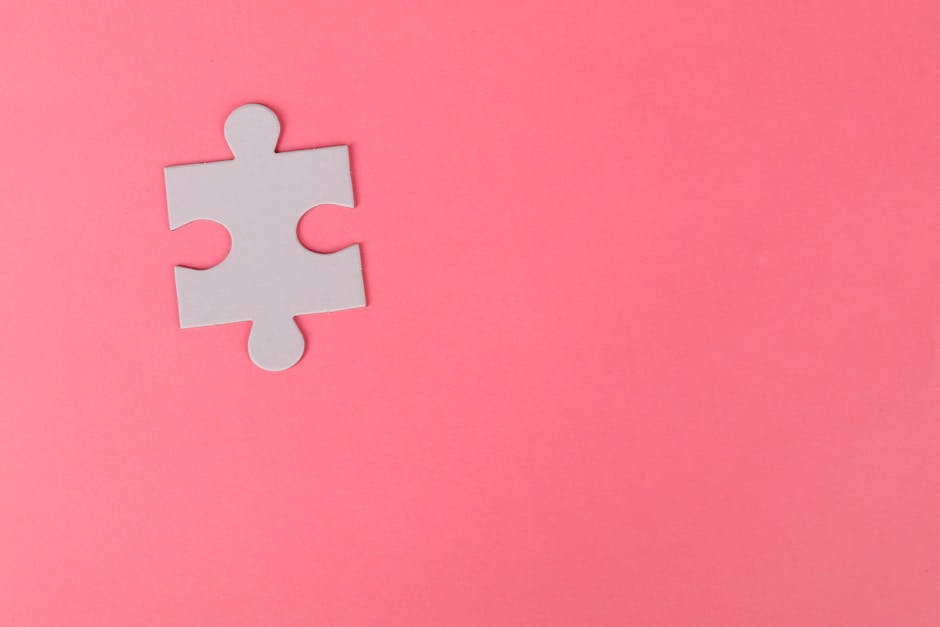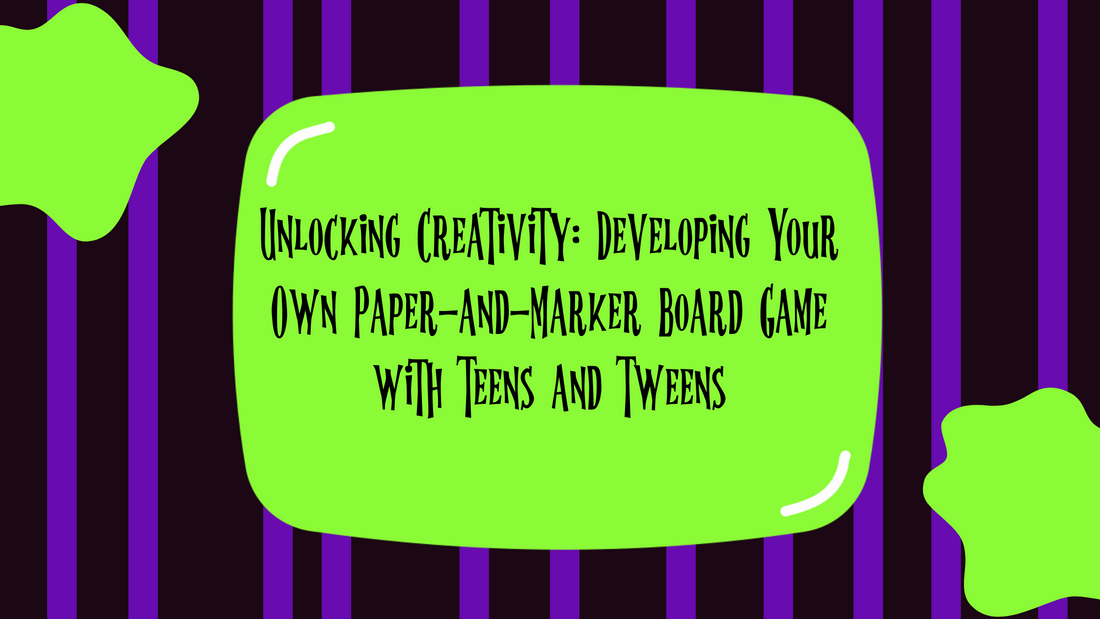As an affiliate, I earn from qualifying purchases, but this doesn't affect the reviews or recommendations—your trust is important to me!
Unlocking Creativity: Developing Your Own Paper-and-Marker Board Game with Teens and Tweens

DIY Board Game Creation - An Artistic Adventure for Kids
Have you ever looked at your collection of board games and thought, I bet I could create my own board game using paper and markers? Well, you're not alone. A new wave of DIY board game enthusiasts is sweeping the globe, unlocking creativity in teens and tweens alike, and transforming simple paper-and-marker games into interactive pieces of art.
It's not just about developing board game skills or enhancing artistic development, but it’s also an exciting journey of creative expression that delights young minds. This blog post will guide you through the steps to create a board game of your own, fostering creativity in young people while keeping them engaged in a fun, hands-on creative activity.
So, are you ready to roll the dice and step into the artistic adventure of game design for kids? Let's dive in!
Think of all that idle time your kids spend scrolling through screens
What if they could spend it exploring their artistic selves and flexing their creative muscles? Well, crafting board games present a unique opportunity to do just that! Creating a homemade board game is an open-ended process where the only limit is the imagination. To set the ball rolling, encourage your teen or tween to brainstorm some fun themes. These themes could be anything that sparks their interest; a favourite book, an episode of a loved TV show, or even the excitement of a memorable family vacation. Remember, the goal here is to make the process enjoyable!
Next, sketch out a path or playing area
This is where the paper-and-marker game starts to take shape. Adding pathways, shortcuts, obstacles, or secret tunnels on the game board introduces unpredictable twists and turns. This process itself is an educational craft for tweens that fosters strategic and logical thinking. A handy tip: have your teens or tweens imagine the game from a player’s point of view. How thrilling would it be if there was a shortcut to the finish line, or a spooky forest that leads to a secret treasure?
Time to get those markers out!
At this stage, your children are ready to breathe life into their game board. This is where your young ones can truly let their creativity shine. Remember, colors can evoke feelings, so they should carefully select the hues that match the theme and mood of the game. Do they want their players to feel excitement, fear, or mystery? They can incorporate corresponding color palettes into the board game design. Now, this is creative thinking in action!
Establishing the game rules
Once the design is complete, the game needs rules to guide the gameplay. Establishing the game rules is much more than just deciding what dice number leads to what path. It is a journey of teaching game design principles to your kids. It’s about understanding how to deliver a fun, engaging, and rewarding experience. Simple things like what a player has to do, what they can or cannot do, and especially how they can win are integral for game development. It's a perfect example of learning disguised as fun, isn't it?
Designing game pieces
But a board game wouldn't be complete without its characters or ‘game pieces.’ Creative project for teens here is designing these game pieces. They might create superheroes fighting monsters, detectives solving mysteries, or explorers unearthing ancient civilizations. The more they relate to and invest in these characters, the more engaging their paper-and-marker game will become. They might even start to see a part of themselves in their creations.
Unleashing limitless creativity
The steps to create a board game are endless and customizable; there is no wrong or right way. It's about unlocking creativity, trying, failing, and learning. With this DIY project for tweens, teenagers can develop board game designing skills that will stay with them for life. It's an artistic development that goes far beyond the game itself! Such fun creative activities have been known to foster creative expression, boost creativity and unlock youth creativity like nothing else. Wouldn't it be wonderful to see your children turn into game designers – right at home?

```html
25 Recommended Tools and Materials for Developing Board Games with Teens and Tweens
- - Marker sets (Variety of vibrant colors)
- - Card stock paper
- - Large poster board
- - Rulers and measuring tapes
- - Compasses for drawing circles
- - Stencils for drawing symbols and shapes
- - Erasers and White Out
- - Clear adhesive contact paper
- - Colored pencils
- - Different sizes of paintbrushes
- - Pencil sharpeners
- - Adhesive glue sticks
- - Construction paper
- - Scissors (both regular and decorative cutting edges)
- - Transparent markers for overlays
- - Miniature figurines or tokens
- - Dice or spinners
- - Sketchbooks for game design drafts
- - Dry erase boards (for ongoing gameplay changes)
- - Plastic baggies for secure storage
- - Scrapbooking embellishments (such as stickers, ribbons, etc.)
- - Encapsulated glitter and sequins for decoration
- - Metallic pens for fine details
- - 3D pop-up stickers
- - Assorted buttons for player markers

So, Let the Dice Roll Towards Creativity
Take your first step towards building your own board game. Encourage your teens and tweens to grasp those markers and start mapping out a world where they make the rules, design the characters, and control the narrative.
All About the Journey
As you venture together on this creative journey, you'll realize that this isn't just about building a game. It's more about learning, growing, and discovering hidden talents. It's about turning everyday materials into something extraordinary.
A Spark of Joy
As each game piece finds its place on the vibrant board, you'll see a spark of joy igniting a lifelong love of creativity in your teens and tweens.
More than Just a Game
Remember that our little adventure with paper and markers is much more than a game. It's a legacy of creativity, one that you, your kids and perhaps, even your grandkids, will enjoy for years to come.
Let the Games Begin!
So, go ahead, unleash that creative genius within and let the games begin!
Other Stuff You May Like:
```html
25 Recommended Tools and Materials for Developing Board Games with Teens and Tweens
- - Marker sets (Variety of vibrant colors)
- - Card stock paper
- - Large poster board
- - Rulers and measuring tapes
- - Compasses for drawing circles
- - Stencils for drawing symbols and shapes
- - Erasers and White Out
- - Clear adhesive contact paper
- - Colored pencils
- - Different sizes of paintbrushes
- - Pencil sharpeners
- - Adhesive glue sticks
- - Construction paper
- - Scissors (both regular and decorative cutting edges)
- - Transparent markers for overlays
- - Miniature figurines or tokens
- - Dice or spinners
- - Sketchbooks for game design drafts
- - Dry erase boards (for ongoing gameplay changes)
- - Plastic baggies for secure storage
- - Scrapbooking embellishments (such as stickers, ribbons, etc.)
- - Encapsulated glitter and sequins for decoration
- - Metallic pens for fine details
- - 3D pop-up stickers
- - Assorted buttons for player markers











